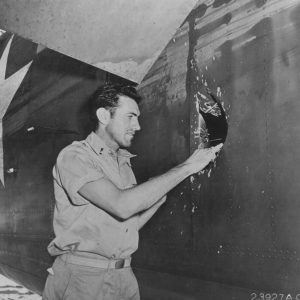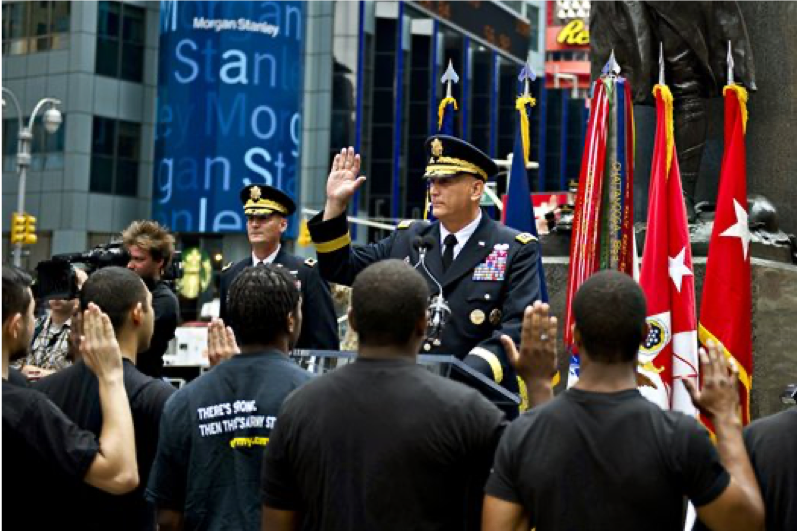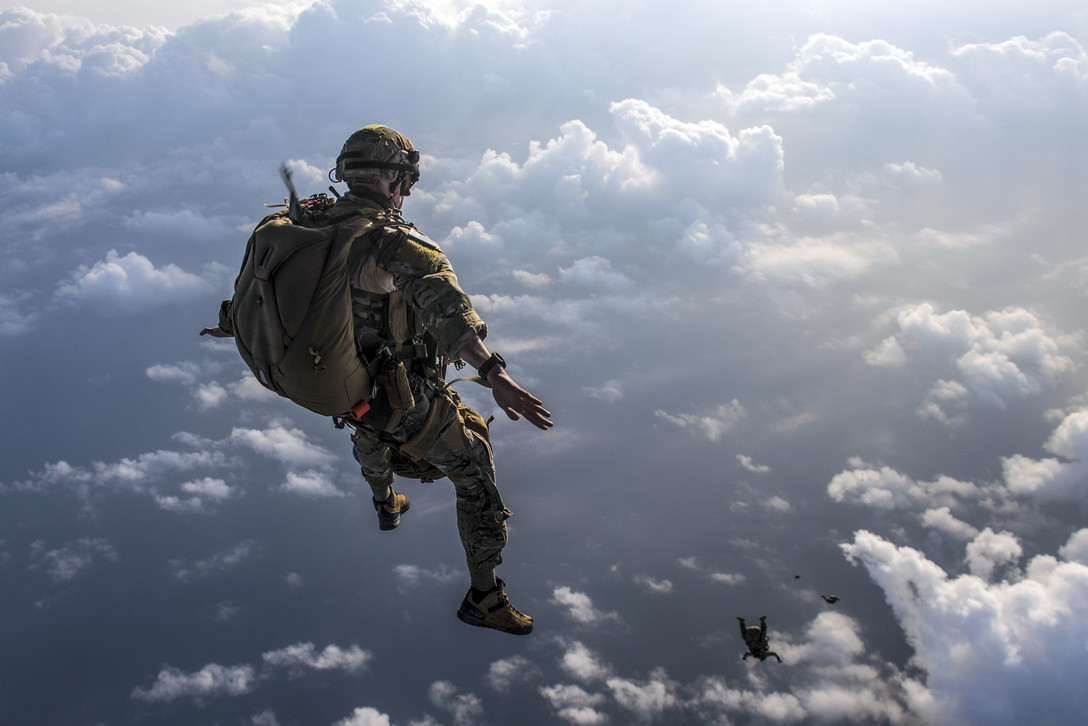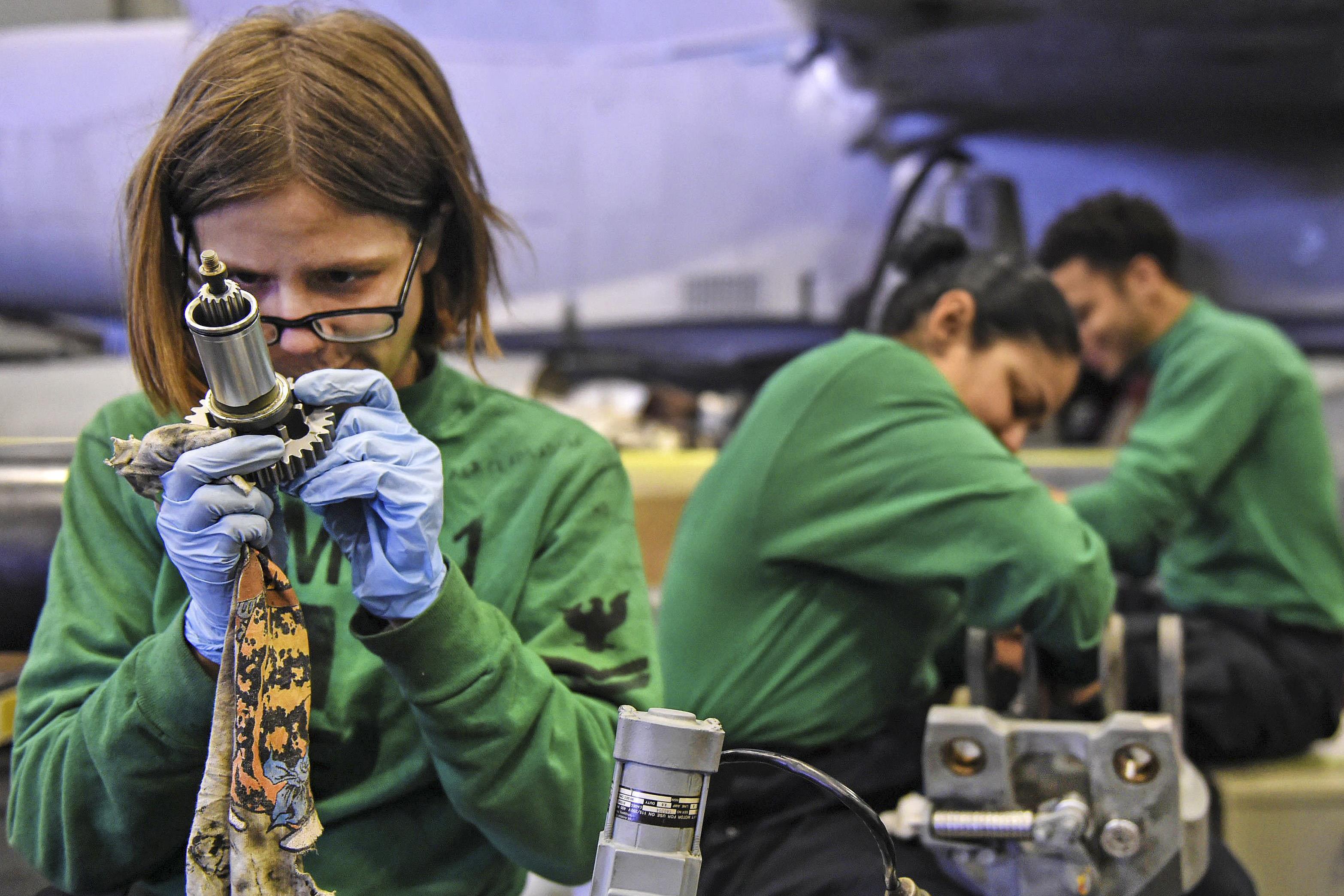
1Lt Louis Zamperini, bombardier of this B-24D Liberator ‘Superman’ peering through a hole in the aircraft from a 20mm shell over Nauru, Apr 20 1943; photo taken at Funafuti, Gilbert Islands. Source: National Archives
If you want to see an example of military resilience, take a look at the movie Unbroken. This is a dramatization of the true story of Louis Zamperini, the Olympic athlete, Army Air Corps Bombardier, and WWII POW. If you haven’t heard Louis’ story, take a few minutes to check out this short video:
The lessons in Louis’ life are significant and many. Perseverence. Resilience. Sheer unstoppable will. One of the key moments in the film that struck me, however, was an exchange that Zamparini had with a fellow POW. He had endured significant torture and abuse, some beyond even what his fellow POWs experienced, and was feeling disheartened and discouraged. He expressed hatred and determination to his fellow prisoner, and committed to beating the captor who was tormenting him. In response, Louis was told:
We can beat them by making it to the end of the war alive.
We can win by endurance. Sheer force of will. The idea of, “if I can take it, I can make it” became Zamparini’s talismanic phrase that helped him endure horrendous torture.
As inspiring as Zamparini’s story is, I was reminded of another phrase from a different medium, Paul Dillon’s interview by Byron Chen on the SuccessVets podcast. Dillon is describing the differences between his return from Vietnam compared to how returning veterans today are greeted, and says something to the effect of:
We have finally been able to separate the war from the warrior
The key words that both of these phrases have in common is: the war. Combat. In it’s many forms, through generations of conflicts, across the landscape of many nations. For many, the war ended the moment they returned home, in one sense; however, for many, the war continues, only in the battlefield of their minds instead of the land of foreign countries.
When I heard those two phrases separately, I thought to myself each time…they could be talking about veteran mental health.
We can overcome our challenges…our war…with depression, anxiety, substance addiction, and posttraumatic stress disorder by making it to the end of the war alive. By any honorable, beneficial, and appropriate means necessary. By not allowing the memories of the past to put a stranglehold on to our present and hold our future hostage, by not allowing ourselves to succumb to negative perceptions about ourselves and others. By not allowing the depression to overwhelm us to the point where we take our own lives, not allowing the anxiety to hobble us to the point where our lives are lived isolated in dark rooms. Not every veteran struggles with mental health concerns after returning from combat, but a significant number do, and they are still at war in their minds. At war with themselves. With their thoughts and emotions. With their family, friends, and communities, who at times feel like the closest allies and other times feel like the bitterest enemies. This is too often the war of the combat veteran, and, as Zamperini’s fellow prisoner stated, we can beat these challenges by making it to the end of the war alive. By learning to endure, by reaching out for help, by figuring out some other way to manage our emotions rather than out of control rage or desensitization by substances, prescribed or otherwise.
Too often, veterans feel as though others don’t understand them. Only those who have “been there” really “get it,” and trying to help them to understand is an exercise in futility. Even worse, the war seemed to have gotten inside some veterans and festered, holding them hostage; the veteran themselves cannot separate the war from the warrior. If, in this context, the “war” is the struggle with the mental health challenges that some veterans experience when the return, then veterans begin to think that their mental health diagnoses define them. The war…depression, anxiety, substance use, PTSD…becomes the mark of the warrior, the price the warrior paid for their sacrifice.
While, as Dillon points out, the community has been successful at separating the war from the warrior, that applies to the two most recent conflicts, the wars in Iraq and Afghanistan. Although the conflicts themselves were not popular (or often even remembered), the public has been able to recognize that the warriors executing the combat actions were not synonymous with the war itself. Is that true if we consider the mental health challenges of the war in the same context? How many employers, concerned that a combat veteran may have PTSD or some other service related mental health concern, and choose not to hire them? It’s not like a candidate’s mental health can legally be a subject in a job interview, so if the hiring manager has the assumption that this is the case, then they have certainly not separated the war from the warrior. Not only does the veteran fail to separate the war from themselves as the warrior, in a very real sense, the unaware public does as well.
This can be overcome by awareness. By not allowing the battles to overcome us, to destroy us.
By separating the war from the warrior, and making it to the end of the war alive.



